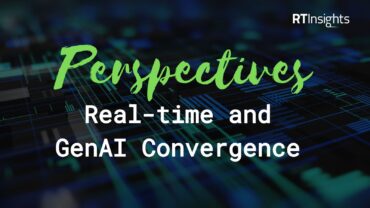
Stream processing and real-time responsiveness can significantly improve existing customer care processes and data flows.
Few businesses are more personal than healthcare. Patients have a deeply vested interest in their experience, and professionals of all stripes, from nursing assistants to case workers to surgeons, work diligently for the best possible outcomes. While the healthcare industry is changing dramatically, the technology behind healthcare systems is often stagnant. IT teams struggle to implement architectures that allow for innovation around patient experience without running afoul of legacy applications, budgets, and regulatory hurdles. Stream processing can help.
How? Stream processing and real-time responsiveness don’t just promise to improve existing customer care processes or data flows. When implemented correctly, these data pipelines give doctors, nurses, and other healthcare professionals access to net-new use cases that can improve patient outcomes from day one, like:
- Patient and clinical informatics: The automatic acquisition, structuring, storage, and processing of data from patients, healthcare professionals, and facility administration opens up incredible opportunities for real-time responsiveness.
- On a patient level, clinicians can act on real-time reports that have aggregated multiple data sources, saving them time, and helping them focus on patient outcomes, especially in emergency and ICU care. On a larger scale, entire organizations can react quickly to optimize staffing and supplies across their system to ensure they have capacity wherever needed.
- IoT and smart mobile devices: Healthcare professionals typically only record vital signs or other health data, like cardiac activity and blood values, during routine check-ups, meaning they see only a tiny portion of the big picture. They miss out on opportunities to diagnose and provide treatment faster—even in life-threatening conditions.
- By monitoring these and other vitals using wearable medical devices, healthcare systems can apply stream processors that leverage predictive analytics and AI technology to determine the likelihood of a medical condition, delivering more preventative care and preventing costly emergencies. Beyond patient care, these devices help hospitals optimize their assets, from beds to expensive testing equipment to actual patients.
See also: AI in Healthcare: Emerging Trends to Follow In 2023
Using stream processing to initiate real-time actions
Healthcare providers have a unique challenge around collecting and utilizing real-time data: it’s almost immediately perishable. In a retail setting, for example, data analysts can take their time to pore through weeks’ or months’ worth of data to understand trends or recommend new initiatives for improving their organization’s bottom line. Healthcare professionals get no value from immediate notifications if they aren’t actionable, either by themselves or by an integrated system that acts on their behalf at a millisecond-level scale.
All healthcare data is highly sensitive, but when real-time data reports on current patients and their existing conditions over batch analytics weeks or months past the time of collection, the risk profile gets much broader. Any real-time responsiveness solution must be protected against unauthorized access or misuse by anyone within the organization. HIPAA, GDPR, and FDA regulations also restrict how they process and store sensitive data.
As with the other industries, informatics professionals and architects at healthcare providers are looking for stream processing solutions that integrate with the rest of their architecture and have endless horizontal scale, which offloads the burden from downstream systems. But based on the unique operating characteristics, these folks can benefit their organizations in a few unique ways:
Linking legacy data with modern, real-time applications: The stream processing platform of choice should be able to pull events from an ESB, mainframe, or data warehouse using non-intrusive change data capture, which externalizes it into in-memory computing and highly-concurrent data storage.
From there, IT professionals within healthcare organizations can add on additional stream processing applications, such as statistical functions for detecting patterns or customized ML model inference to synthesize data from any number of real-time sources for instant and informed responses from doctors, nurses, and beyond.
Implementing low-maintenance, high availability: Informatics data does no good if it’s offline. Even worse, a healthcare system that’s highly dependent on the availability of its data pipelines could find itself in a dangerous situation during downtime.
Any successful stream processing solution must come with observability tooling for the health and availability of both processing clusters and data structures being concurrently processed. The same goes for security, with role-based access control (RBAC), end-to-end encryption, and mutual authentication, all requirements for sensitive data and critical outcomes.






